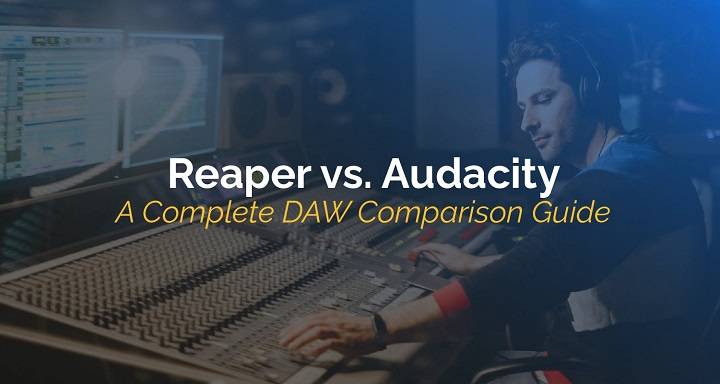Table of Contents
Embarking on your audio production journey requires the right Digital Audio Workstation (DAW), and two popular choices are Reaper and Audacity. Both offer unique features catering to different needs and skill levels. In this comprehensive guide, we’ll delve into the nuances of Reaper vs Audacity, helping you make an informed decision for your specific audio editing and production requirements.
Understanding the Basics of Reaper and Audacity

Certainly! Here’s an extended comparison between Reaper and Audacity, delving deeper into their respective features and functionalities:
Reaper: Reaper, short for Rapid Environment for Audio Production, Engineering, and Recording, is a comprehensive digital audio workstation (DAW) developed by Cockos Incorporated. It’s known for its extensive feature set that caters to professional audio engineers, musicians, and producers. Some of its prominent features include:
Multi-Track Recording: Reaper allows for multi-track audio recording, enabling users to record and edit multiple tracks simultaneously, supporting a vast range of audio formats.
Flexible Interface: Its user interface is highly customizable, allowing users to tailor the layout, tools, and functionalities to suit their specific workflow preferences.
VST Support and Plug-ins: Reaper supports a wide array of VST plugins and effects, giving users access to a diverse range of audio processing tools for mixing and mastering.
Automation and Control: It offers robust automation capabilities, allowing for precise control over various parameters like volume, panning, and effects modulation over time.
MIDI Editing: Reaper provides comprehensive MIDI editing features, enabling users to compose, edit, and manipulate MIDI tracks alongside audio tracks.
Extensive Routing and Signal Processing: The software offers advanced routing options and signal processing capabilities, facilitating complex audio routing and mixing tasks.
Cross-Platform Compatibility: Reaper is available on multiple operating systems (Windows, macOS, Linux), ensuring accessibility across various platforms.
Audacity: Audacity is an open-source, free-to-use audio editing software that serves as an excellent entry point for beginners and casual users looking to perform basic audio editing tasks. Its key features include:
Simple Interface: Audacity has a user-friendly interface, making it easy for beginners to navigate and perform basic editing tasks like cutting, copying, and pasting audio segments.
Basic Editing Tools: It offers fundamental editing tools such as selection, trimming, and basic effects like fade in/out, noise reduction, and normalization.
Multi-Track Editing (Limited): While it supports multi-track editing, Audacity’s capabilities in this aspect are more limited compared to professional-grade DAWs like Reaper.
Plugin Support (Limited): Audacity does support plugins, but its compatibility and range of available plugins are more limited compared to other DAWs.
Platform Compatibility: Audacity is available on multiple platforms, including Windows, macOS, and Linux, ensuring broad accessibility.
Recording Capabilities: It allows for straightforward audio recording from various sources like a microphone or line-in input.
Community Support: Being open-source, Audacity benefits from a supportive community that provides resources, tutorials, and plugins to enhance its functionality.
User Interface and Accessibility

Certainly, let’s delve deeper into the user interfaces of Reaper and Audacity, highlighting their design, ease of use, and accessibility for different user levels:
Reaper’s User Interface:
Reaper offers a highly customizable user interface that provides a vast array of options for advanced users:
Customizability: Reaper’s interface is incredibly flexible, allowing users to customize nearly every aspect of the software. Users can rearrange windows, resize elements, and create custom toolbars to suit their specific workflow.
Docking and Layouts: Users can dock various windows, such as the mixer, track control panels, and FX chains, in different positions within the interface. This flexibility enables personalized layouts for editing, mixing, and arranging tracks.
Theme Customization: Reaper supports themes, allowing users to change the visual appearance of the interface. This feature enables users to create personalized visual styles or choose from a variety of existing themes available online.
Extensive Control Options: Advanced users appreciate Reaper’s extensive control options. It allows mapping of keyboard shortcuts, MIDI controllers, and external hardware to enhance workflow efficiency.
Learning Curve for Beginners: While its flexibility is beneficial for power users, newcomers might find the vast customization options initially overwhelming, potentially leading to a steeper learning curve.
Audacity’s User Interface:
Audacity, on the other hand, focuses on simplicity and ease of use:
Straightforward Layout: Audacity features a more straightforward and easy-to-understand layout with essential tools readily visible on the interface. This simplicity makes it accessible for beginners.
Basic Interface Tools: The interface includes basic tools such as selection, zoom, cut/copy/paste functions, and effects accessible through menus and buttons.
Limited Customization: Unlike Reaper, Audacity’s interface customization options are more limited. Users have fewer options to modify the appearance or layout of the software.
Intuitive for Beginners: The simplicity of Audacity’s interface makes it more approachable for those new to audio editing or DAWs. The learning curve is relatively gentle, allowing users to quickly grasp fundamental editing functions.
Focused Features: Audacity’s interface primarily concentrates on essential editing functions rather than providing an extensive array of advanced features, which might limit its appeal to more experienced users seeking complex functionalities.
Ease of Use and Accessibility:
Reaper appeals to experienced users who value customization, flexibility, and extensive control options. Its interface may initially overwhelm beginners but offers powerful tools for those willing to invest time in learning.
Audacity caters to beginners with its straightforward interface, making basic editing tasks easily accessible. It might lack the depth of features and advanced functionalities found in professional-grade DAWs like Reaper but serves as an excellent entry point for those new to audio editing.
Audio Editing Capabilities
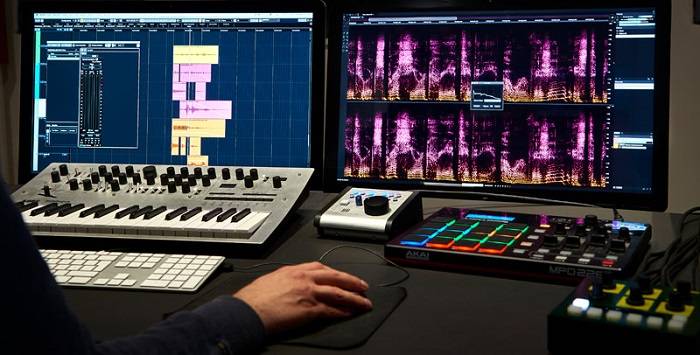
Certainly, let’s delve deeper into the audio editing tools and capabilities offered by Reaper and Audacity, highlighting their differences in functionality and complexity:
Reaper’s Audio Editing Tools and Capabilities:
Multi-Channel Support: Reaper excels in handling multi-channel audio, supporting numerous tracks for recording, editing, and mixing. It allows for intricate editing of multiple audio sources simultaneously, catering to complex project requirements.
Advanced Automation: Reaper offers powerful automation tools, allowing users to automate various parameters like volume, panning, effects, and plugin parameters over time. This feature enables precise control and customization of audio elements.
Flexible Editing Functions: Its editing capabilities encompass a wide range of functions, including split, trim, fade, crossfade, pitch shifting, time-stretching, and more. Users can perform detailed and nuanced editing on audio tracks.
Extensive Plugin Support: Reaper supports a vast array of plugins and effects, providing users with access to a diverse set of tools for processing and manipulating audio.
MIDI Editing and Integration: Alongside audio editing, Reaper’s comprehensive MIDI editing features allow users to compose, edit, and manipulate MIDI data seamlessly, integrating MIDI tracks into audio projects.
Audacity’s Audio Editing Tools and Capabilities:
Fundamental Editing Tools: Audacity offers basic but essential editing tools such as cut, copy, paste, trim, split, and merge. These tools are intuitive and straightforward, suitable for beginners and casual users.
Limited Multi-Track Editing: Audacity supports multi-track editing but with more basic capabilities compared to Reaper. Users can work with multiple tracks, but the functionality and ease of handling multiple tracks are more limited.
Essential Effects and Processing: It provides a selection of essential effects like fade in/out, noise reduction, normalization, and basic EQ, catering to fundamental audio enhancement needs.
Simpler Automation: Automation capabilities in Audacity are more limited compared to Reaper. While some basic automation features exist, the depth and precision of automation tools are not as extensive.
Basic Plugin Support: Audacity supports plugins but with more limited compatibility and availability compared to professional DAWs like Reaper. Users may find a smaller selection of plugins to enhance audio processing.
Comparison:
Reaper stands out for its extensive and advanced audio editing capabilities, ideal for professionals and advanced users who require intricate control over audio elements, multi-track editing, and automation.
Audacity, while providing essential editing tools, caters to beginners and casual users seeking a simple and accessible platform for basic audio editing tasks. Its functionality might be limited for those requiring more complex editing features and multi-track capabilities.
Plugins and Effects
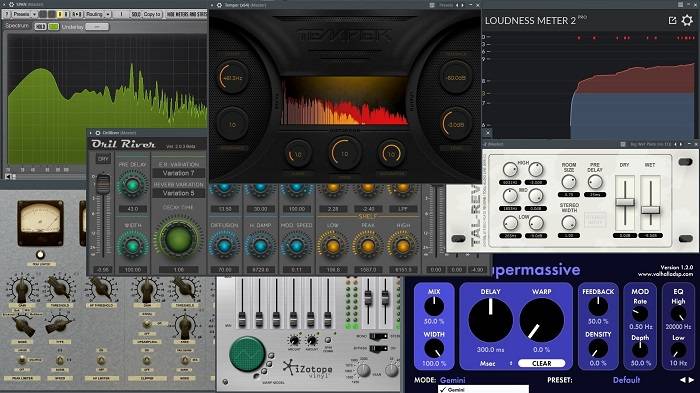
Certainly! Let’s further explore the plugin and effects support in Reaper and Audacity, detailing their capabilities and differences:
Reaper’s Plugin and Effects Support:
Extensive Plugin Compatibility: Reaper is renowned for its extensive plugin compatibility, supporting a wide range of third-party VST, VST3, AU, JSFX, and ReWire plugins. This compatibility allows users to access a vast library of effects, instruments, and processing tools to enhance their audio projects.
Customizable Signal Processing Chains: Users can create intricate signal processing chains by stacking multiple plugins and effects within Reaper. This flexibility enables fine-tuning and customization of audio processing to meet specific project requirements.
Virtual Instruments Integration: In addition to effects, Reaper supports various virtual instruments (VSTi, AU instruments), allowing users to incorporate synthesized sounds and MIDI-based instruments seamlessly into their compositions.
Real-time Monitoring and Effects: Reaper facilitates real-time monitoring of effects, enabling users to hear the applied effects while recording or during playback, aiding in precise adjustments.
Presets and ReaPlugs Suite: Reaper includes its ReaPlugs suite, offering a collection of high-quality native effects and tools. Users can create and save custom presets, streamlining their workflow for future use.
Audacity’s Effects and Plugin Support:
Built-in Effects: Audacity provides a selection of built-in effects suitable for common audio editing tasks. These include effects for noise reduction, EQ, amplification, normalization, reverb, and more. While the number of effects is limited compared to Reaper, they cover essential functionalities.
Limited Plugin Support: Audacity supports a smaller selection of plugins compared to Reaper. It primarily supports LADSPA, LV2, and Nyquist plugins, which are less common or fewer in number than those supported by other professional-grade DAWs.
Simplicity and Accessibility: Audacity’s focus on simplicity means that while it may have a limited range of effects and plugins, the ones available are straightforward and easy to apply, making them suitable for beginners and users seeking quick, basic editing.
Comparison:
Reaper offers a vast array of plugin compatibility and effects, providing users with extensive options to enhance audio tracks. Its support for third-party plugins and virtual instruments allows for greater creativity and versatility in audio processing.
Audacity, while providing a selection of built-in effects, lacks the extensive plugin compatibility and variety found in Reaper. Its focus on simplicity means it offers basic effects suitable for common tasks, making it more accessible to beginners but limiting for advanced users seeking a broader range of tools.
Multitrack Editing
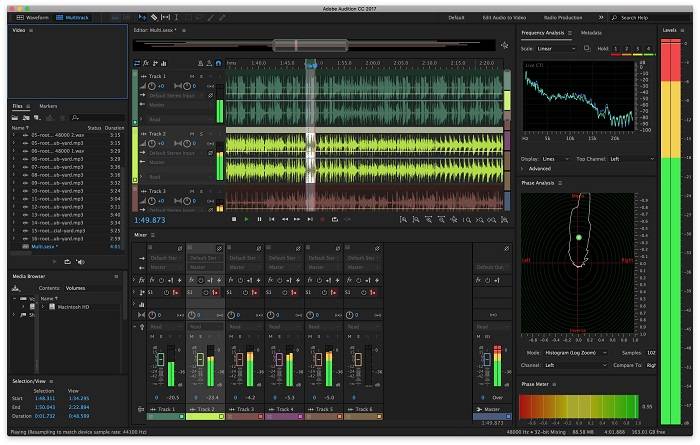
Certainly, let’s explore the multitrack editing capabilities of Reaper and Audacity in more detail, highlighting their respective strengths and limitations:
Reaper’s Multitrack Editing Capabilities:
Advanced Multitrack Support: Reaper is designed to handle complex multitrack projects with ease. It allows users to work with an extensive number of tracks, making it suitable for recording, editing, and mixing intricate audio compositions.
Customizable Track Layout: Users have the flexibility to customize the layout and arrangement of tracks within the interface. This feature is beneficial for organizing and managing multiple tracks, providing a clear overview of the project structure.
Non-Destructive Editing: Reaper facilitates non-destructive editing, allowing users to make changes to individual tracks without altering the original audio files. This feature ensures flexibility in editing and experimentation without compromising the original recordings.
Grouping and Routing Options: It offers advanced grouping and routing options, allowing users to organize tracks into groups for easier management, apply effects to multiple tracks simultaneously, and create complex signal routing configurations.
Efficient Editing Tools: Reaper provides a range of editing tools for multitrack projects, including ripple editing, time-stretching, crossfading, and automation, enabling precise control over individual tracks and the overall mix.
Audacity’s Multitrack Editing Capabilities:
Basic Multitrack Editing: Audacity supports multitrack editing but with more limited capabilities compared to professional DAWs like Reaper. Users can work with multiple tracks, but the functionality and ease of handling multiple tracks are more basic.
Simplified Track Management: Audacity’s approach to multitrack editing is more straightforward, allowing users to arrange and edit multiple tracks but with fewer advanced features compared to Reaper.
Limited Track Manipulation: While it supports multiple tracks, Audacity might lack certain functionalities essential for complex multitrack editing, such as advanced grouping, routing, and comprehensive track management options.
Basic Mixing and Editing Tools: Audacity provides basic mixing and editing tools for multitrack projects, including volume adjustments, panning, and basic effects application across tracks.
Comparison:
Reaper excels in handling complex multitrack projects, offering advanced tools, customization options, and capabilities for managing and editing numerous tracks simultaneously. Its robust features make it suitable for professional-grade audio production.
Audacity, while supporting multitrack editing, is geared more towards simpler multitrack projects. It provides basic functionalities for handling multiple tracks, making it suitable for beginners or users working on straightforward audio compositions.
Performance and Resource Usage
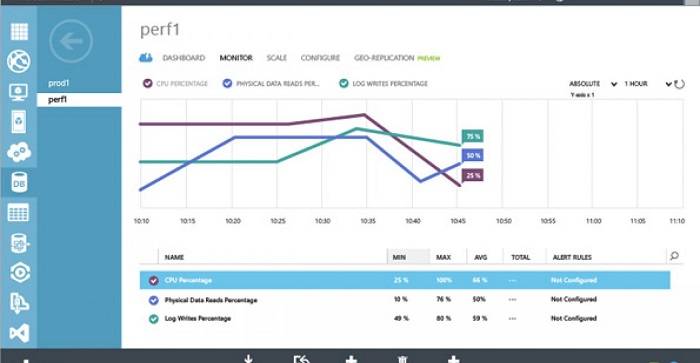
Certainly, let’s delve deeper into the performance and resource usage of Reaper and Audacity, highlighting their efficiency and suitability for different hardware setups:
Reaper’s Performance and Resource Usage:
Efficient Coding and Optimization: Reaper is known for its highly efficient coding and optimization, allowing it to handle larger and more complex projects without significant strain on system resources. Its performance scales well even with substantial track counts, effects, and plugins.
Low Latency and Real-Time Processing: Reaper’s efficient design enables low latency, making it suitable for real-time audio processing tasks such as live recording, monitoring, and live performance setups. This feature is crucial for professional users who require minimal delay during recording and playback.
Customizable Resource Settings: Users have the ability to customize various resource settings within Reaper, such as buffer sizes, CPU usage limits, and thread optimizations. This flexibility allows users to tailor the software’s performance according to their hardware specifications and project requirements.
Optimized for High-End Systems: Reaper’s efficiency makes it well-suited for high-end systems, where it can take full advantage of the available hardware resources to handle demanding audio production tasks.
Audacity’s Performance and Resource Usage:
Lightweight and Minimal Resource Consumption: Audacity is designed to be lightweight and consumes minimal system resources, making it suitable for users with lower-end hardware or older computers. It can run efficiently on systems with limited processing power or RAM.
Simplicity Contributes to Low Resource Usage: Its focus on providing essential editing functionalities contributes to its low resource usage. Audacity’s straightforward interface and limited feature set allow it to operate smoothly on less powerful hardware.
Basic Processing Demands: Audacity’s basic editing tools and effects require fewer system resources compared to more feature-rich DAWs like Reaper. This makes it accessible to users who prioritize simplicity and have hardware limitations.
Suitability for Beginners and Casual Users: Audacity’s lightweight nature and minimal resource consumption make it an accessible choice for beginners, hobbyists, or users who don’t require the extensive capabilities of professional-grade DAWs.
Comparison:
Reaper prioritizes efficient coding and optimization, making it suitable for handling larger projects and complex audio tasks without sacrificing performance. It is well-suited for high-end systems and professional audio production environments.
Audacity, with its lightweight design and minimal resource consumption, is more accessible, especially for users with lower-end hardware or those seeking a simple, straightforward audio editing solution. It’s ideal for beginners, hobbyists, or users with basic editing needs.
Price and Licensing
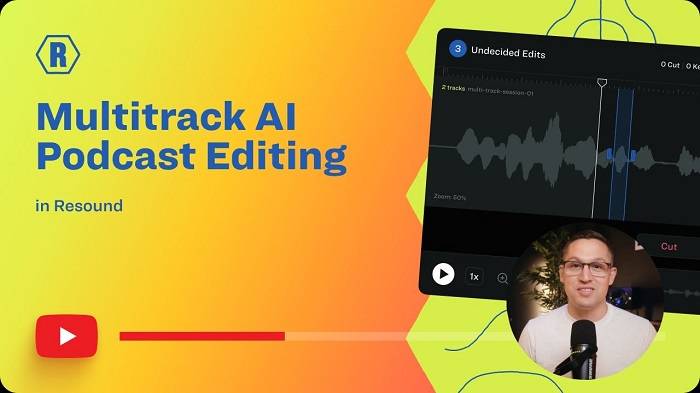
Let’s dive into the pricing models and licensing structures of Reaper and Audacity, emphasizing their differences and what they offer to users:
Reaper’s Licensing Structure:
Flexible Evaluation and Pricing: Reaper offers a generous evaluation period with its trial version, allowing users to test the software extensively before deciding to purchase. The trial version does not expire, and users are encouraged to pay for the software if they continue using it.
Reasonable Pricing: Reaper follows a single, affordable pricing model. It’s available for purchase at a considerably lower price compared to many other professional DAWs. This one-time purchase grants users full access to all future updates.
Personal and Commercial Use: The license allows for both personal and commercial use without any limitations on the features or functionality of the software. This flexibility is beneficial for independent creators, professionals, and businesses.
Fair and Ethical Licensing Policy: Reaper operates on a trust-based system. Users are encouraged to purchase the license after the trial period if they find the software useful, emphasizing fairness and trust within its licensing policy.
Audacity’s Licensing Structure:
Open-Source and Free-to-Use: Audacity is an open-source software released under the GNU General Public License (GPL). As such, it is entirely free to download, use, modify, and distribute. Users have access to the full suite of Audacity’s features without any payment requirements.
Community-Driven Development: Being open-source, Audacity benefits from a community of developers contributing to its improvement and maintenance. This fosters continuous updates and improvements to the software.
No Restrictions on Usage: Audacity’s open-source nature allows for unrestricted usage, making it an ideal choice for individuals, educational institutions, nonprofits, and businesses looking for a cost-effective audio editing solution.
Free Updates and Support: Users have access to free updates and ongoing support through community forums, tutorials, and documentation provided by the Audacity community.
Comparison:
Reaper offers a flexible licensing system with a substantial trial period, affordable pricing for full access, and a trust-based approach that encourages users to support the software if they find it valuable.
Audacity stands out for its open-source nature, providing users with a completely free-to-use software without any restrictions on features or usage. Its community-driven development ensures continuous updates and support at no cost to the user.
Third-Party Support and Communities

Reaper and Audacity, while both powerful digital audio workstations (DAWs), have distinct differences in their third-party support and community engagement, which greatly impact user experiences.
Reaper boasts an active and vibrant community that contributes significantly to its extensive third-party resources. Its user forum, maintained by Cockos Incorporated (the developers of Reaper), serves as a hub for discussions, troubleshooting, and sharing of user-generated content. The forum actively engages users, encouraging the exchange of ideas, feature requests, and user-created scripts or extensions. This collaborative environment fosters a rich ecosystem of extensions, themes, plugins, and scripts developed by third parties. These resources significantly enhance Reaper’s functionality, catering to diverse user needs and workflows. Moreover, Reaper’s developers often incorporate user feedback, making the software continually evolve in line with user demands.
In contrast, Audacity’s community-driven development revolves around its open-source nature. It encourages contributions from developers worldwide, resulting in a community-centered approach to software improvement. Audacity’s community is engaged in collaborative coding, bug fixing, and feature development through platforms like GitHub. This open environment allows for transparency in the software’s development process, enabling users to participate directly in shaping the tool’s future. However, compared to Reaper, Audacity’s ecosystem of third-party resources and plugins might be comparatively smaller due to differences in the development structure and support system.
The distinction in their community engagement models also reflects in their support systems. Reaper’s official support is backed by its development team, ensuring prompt responses to queries, detailed documentation, and regular software updates. Audacity relies heavily on its community for support, with forums and user-generated guides being primary sources of assistance.
Ultimately, while both DAWs have their unique strengths in community engagement and third-party support, Reaper shines in its robust third-party resources and active developer-user interaction. Audacity, on the other hand, leverages the power of an open-source community-driven model, promoting collaborative development and user involvement in shaping the software’s direction.
Compatibility and Operating Systems
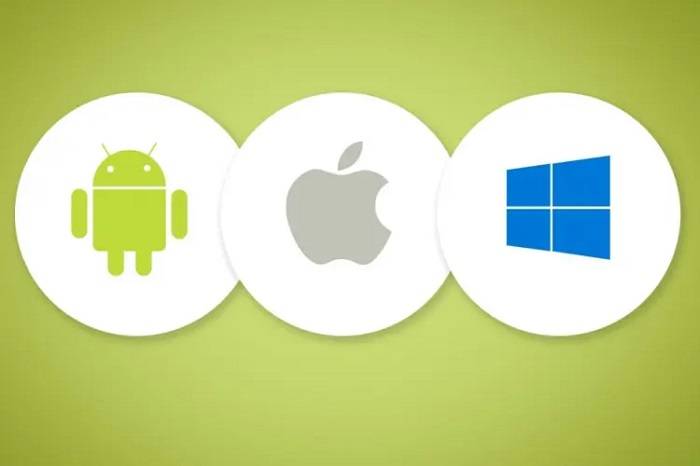
Reaper and Audacity are renowned for their versatility across different operating systems, offering users flexibility and accessibility across various platforms.
Reaper stands out as a highly versatile DAW, providing comprehensive support for Windows, macOS, and Linux operating systems. This broad compatibility enables users across different platforms to experience the full range of Reaper’s features and functionalities without any compromise. This cross-platform compatibility has contributed significantly to Reaper’s popularity among diverse user bases, allowing seamless transitions between operating systems without sacrificing workflow or performance.
Audacity, similarly, is celebrated for its cross-platform availability, supporting Windows, macOS, and Linux environments. This accessibility has been a fundamental aspect of Audacity’s widespread adoption, making it a go-to choice for users who require a consistent audio editing experience across different operating systems. Whether users are on Windows-based PCs, Mac systems, or Linux distributions, Audacity ensures a familiar interface and feature set, promoting ease of use and familiarity regardless of the platform.
Both Reaper and Audacity’s compatibility with multiple operating systems is a testament to their commitment to inclusivity and accessibility. This broad support allows users to work on projects seamlessly across different devices and platforms, fostering greater collaboration and flexibility in audio editing and production.
Updates and Development

Reaper and Audacity follow distinct approaches to their update frequency and ongoing development, influencing how new features are introduced and the pace at which the software evolves.
Reaper, known for its frequent updates, typically receives regular and consistent updates from its developer, Cockos Incorporated. This approach ensures that users benefit from a steady stream of new features, enhancements, and bug fixes. Reaper’s development cycle involves a proactive strategy, often incorporating user feedback and feature requests from its active community. These updates come out relatively frequently, allowing users to access and take advantage of the latest tools and functionalities. Such continuous development has contributed significantly to Reaper’s reputation for being at the forefront of innovation in the audio production realm.
Contrarily, Audacity’s update frequency tends to be influenced by its community-driven development model. As an open-source project, Audacity’s updates may have longer development cycles compared to Reaper. The pace of feature introductions and bug fixes in Audacity largely relies on the contributions and priorities of its volunteer developers. While this model encourages collaboration and community involvement, it may result in less frequent updates compared to commercially driven software like Reaper. However, when updates are released, they often encompass significant changes, improvements, and fixes due to the thorough collaborative efforts of the community.
It’s important to note that the differing update frequencies don’t necessarily signify one software’s superiority over the other. Reaper’s frequent updates ensure a steady flow of new features, enhancements, and optimizations, appealing to users seeking continuous innovation. In contrast, Audacity’s updates, though potentially less frequent, may encompass substantial changes and improvements, reflecting the collective efforts and priorities of its community.
Both Reaper and Audacity, despite their contrasting update frequencies, remain committed to providing users with reliable and powerful audio editing tools. The varied approaches to development—Reaper’s proactive and frequent updates versus Audacity’s community-driven model—offer users different experiences and highlight the diverse paths to software evolution within the audio production landscape.
Related Posts:
- Choosing the Right Audio Editing Software: A Comprehensive Comparison of Ocenaudio vs Audacity
- Unlocking Neuroscience Gold: The Best Huberman Lab Podcast Episodes That Will Expand Your Mind
- The Ultimate Guide to Road Trip Podcasts: Enhance Your Journey with Engaging Stories
FAQs:
Can Audacity projects be imported into Reaper?
Yes, Reaper supports the import of Audacity projects, allowing for a smooth transition between the two DAWs.
Is Reaper suitable for beginners?
While Reaper offers advanced features, its intuitive interface makes it accessible to beginners willing to explore its capabilities.
Are there any limitations in the free version of Reaper?
The free version of Reaper is fully functional with no time limitations, making it an attractive option for budget-conscious users.
Does Audacity support third-party plugins?
Audacity does support third-party plugins, although its selection is more limited compared to Reaper.
In the Reaper vs Audacity debate, the right choice depends on your specific needs and skill level. Reaper caters to professionals with its extensive features, while Audacity remains an excellent choice for beginners and those with simpler audio editing requirements. Consider your preferences, project complexity, and budget before making a decision. Whether you opt for the power of Reaper or the simplicity of Audacity, both DAWs offer a solid foundation for your audio production journey.

